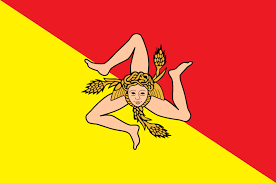Difference between revisions of "Language/Sicilian/Grammar/Articles"
Jump to navigation
Jump to search
(Created page with "<div class="pg_page_title">Sicilian Grammar ➡ Articles</div> {{Sicilian-flag}} Hello everybody, In today's lesson you will learn how to use Articles in Sicilian. Feel free to edit this page if you think it could be improved! Happy learning! :)") |
m (Quick edit) |
||
| (12 intermediate revisions by 2 users not shown) | |||
| Line 4: | Line 4: | ||
Hello everybody, | Hello everybody, | ||
In today's lesson you will learn how to use Articles in Sicilian. Feel free to edit this page if you think it could be improved! | |||
Happy learning! 😊 | |||
__TOC__ | |||
<span link>Take some time to dive into these other pages after completing this lesson:[[Language/Sicilian/Grammar/Definite-Articles-in-Sicilian|Definite Articles in Sicilian]], [[Language/Sicilian/Grammar/Imperative-Mood|Imperative Mood]], [[Language/Sicilian/Grammar/Conditional-Tense|Conditional Tense]] & [[Language/Sicilian/Grammar/Relative-Pronouns|Relative Pronouns]].</span> | |||
==General Rule== | |||
Articles in the Sicilian language are divided into 2 categories: | |||
=== Definite Articles === | |||
* definite: '''lu''', '''la''', '''li''', (the) and indefinite '''nu''', '''na''' (a, an). These articles, like the nouns they describe, have a gender, they can be feminine: '''la''' (singular), '''li''' (plural), and masculine: '''lu''' (singular), '''li''' (plural). | |||
{| class="wikitable" | |||
!Sicilian | |||
!English | |||
|- | |||
|Lu cavàddu | |||
|the horse | |||
|- | |||
|La casa | |||
|the house | |||
|- | |||
|Li cavàddi | |||
|the horses | |||
|- | |||
|Li casi | |||
|the houses | |||
|} | |||
=== Indefinite Articles === | |||
* The indefinites '''nu''', masculine, '''na''', feminine are always singular. | |||
{| class="wikitable" | |||
!Sicilian | |||
!English | |||
|- | |||
|Un cavàddu | |||
|a horse | |||
|- | |||
|Na fìmmina | |||
|a woman | |||
|} | |||
==Exceptions== | |||
For nouns that start with a '''z''' or with an '''s''' followed by a consonant the form '''nu''' of the indefinite article should be used. | |||
=== Definite Articles === | |||
{| class="wikitable" | |||
!Sicilian | |||
!English | |||
|- | |||
|Lu cavàddu | |||
|the horse | |||
|- | |||
|Li cavàddi | |||
|the horses | |||
|- | |||
|La casa | |||
|the house | |||
|- | |||
|Li casi | |||
|the houses | |||
|} | |||
=== Indefinite Articles === | |||
{| class="wikitable" | |||
!Sicilian | |||
!English | |||
|- | |||
|Un cavàddu | |||
|a horse | |||
|- | |||
|Na fìmmina | |||
|a woman | |||
|} | |||
== Contractions == | |||
In the spoken language these articles can be contracted to: | |||
* '''â''' for '''la''' | |||
* '''î''' for '''li''' | |||
* '''û''' for '''lu''' | |||
{| class="wikitable" | |||
!Sicilian | |||
!English | |||
|- | |||
|û cavàddu | |||
|the horse | |||
|- | |||
|î cavàddi | |||
|the horses | |||
|- | |||
|â casa | |||
|the house | |||
|- | |||
|î casi | |||
|the houses | |||
|} | |||
==Other Lessons== | |||
* [[Language/Sicilian/Grammar/Personal-Pronouns|Personal Pronouns]] | |||
* [[Language/Sicilian/Grammar/How-to-Use-Be|How to Use Be]] | |||
* [[Language/Sicilian/Grammar/Demonstrative-Pronouns|Demonstrative Pronouns]] | |||
* [[Language/Sicilian/Grammar/Adjectives|Adjectives]] | |||
* [[Language/Sicilian/Grammar/Indefinite-Articles-in-Sicilian|Indefinite Articles in Sicilian]] | |||
* [[Language/Sicilian/Grammar/Definite-Articles-in-Sicilian|Definite Articles in Sicilian]] | |||
* [[Language/Sicilian/Grammar/Past-Tense|Past Tense]] | |||
* [[Language/Sicilian/Grammar/Future-Tense|Future Tense]] | |||
* [[Language/Sicilian/Grammar/Possessive-Case-in-Sicilian|Possessive Case in Sicilian]] | |||
<span links></span> | |||
Latest revision as of 19:59, 27 March 2023
Sicilian Grammar ➡ Articles
Hello everybody,
In today's lesson you will learn how to use Articles in Sicilian. Feel free to edit this page if you think it could be improved!
Happy learning! 😊
Take some time to dive into these other pages after completing this lesson:Definite Articles in Sicilian, Imperative Mood, Conditional Tense & Relative Pronouns.
General Rule[edit | edit source]
Articles in the Sicilian language are divided into 2 categories:
Definite Articles[edit | edit source]
- definite: lu, la, li, (the) and indefinite nu, na (a, an). These articles, like the nouns they describe, have a gender, they can be feminine: la (singular), li (plural), and masculine: lu (singular), li (plural).
| Sicilian | English |
|---|---|
| Lu cavàddu | the horse |
| La casa | the house |
| Li cavàddi | the horses |
| Li casi | the houses |
Indefinite Articles[edit | edit source]
- The indefinites nu, masculine, na, feminine are always singular.
| Sicilian | English |
|---|---|
| Un cavàddu | a horse |
| Na fìmmina | a woman |
Exceptions[edit | edit source]
For nouns that start with a z or with an s followed by a consonant the form nu of the indefinite article should be used.
Definite Articles[edit | edit source]
| Sicilian | English |
|---|---|
| Lu cavàddu | the horse |
| Li cavàddi | the horses |
| La casa | the house |
| Li casi | the houses |
Indefinite Articles[edit | edit source]
| Sicilian | English |
|---|---|
| Un cavàddu | a horse |
| Na fìmmina | a woman |
Contractions[edit | edit source]
In the spoken language these articles can be contracted to:
- â for la
- î for li
- û for lu
| Sicilian | English |
|---|---|
| û cavàddu | the horse |
| î cavàddi | the horses |
| â casa | the house |
| î casi | the houses |
Other Lessons[edit | edit source]
- Personal Pronouns
- How to Use Be
- Demonstrative Pronouns
- Adjectives
- Indefinite Articles in Sicilian
- Definite Articles in Sicilian
- Past Tense
- Future Tense
- Possessive Case in Sicilian
